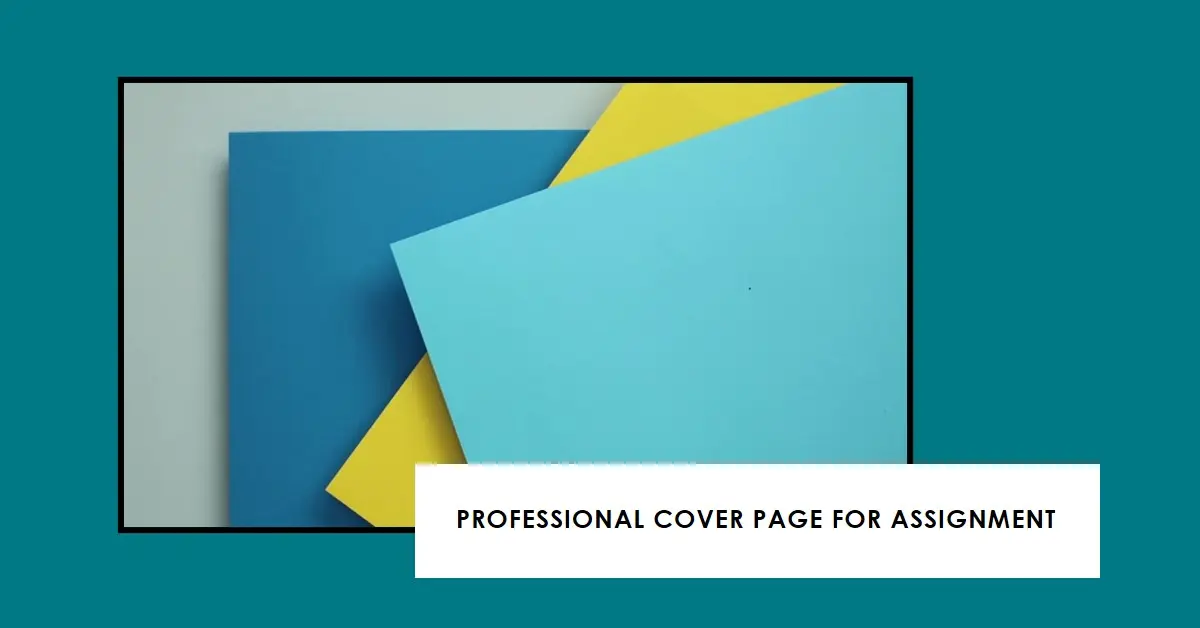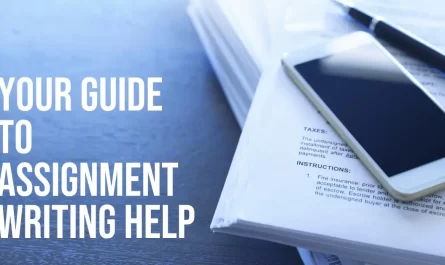The assignment cover page is the first entry point to your academic work and holds tremendous potential for attracting a reader’s attention from the start. This critical element is not just a mere formality; it’s an avenue to present professionalism and accuracy and enhance your credibility. This detailed guide discusses the crucial dos and don’ts of making a standard, impactful cover page. From choosing a suitable title to perfect formatting, mastering these rules will enable you to establish an enduring positive first impression that everybody expects from your scholarly work. Moreover, creating a cover page is an art that exceeds academic performance.
Understanding the Purpose of a Cover Page
A cover page for assignment in academic writing is not a mere design, but it plays a strategic role as being multifunctional. It provides brief information on basic details, including the name of the assignment title, the author’s particulars, and the due date for submission. Besides the aesthetic impact, his cover page has a professional and detail-oriented tone that signals the author’s desire to meet scholarly standards. It offers vital information regarding the context of the assignment and sets up expectations for the reader.
The Do’s of How to Write a Cover Page
Writing a cover page for your assignment involves more than just visual appearance; it is an essential component determining your academic work’s tenor. The following are the essential do’s to consider when creating an effective cover page:
Title and Author’s Information:
Pick a catchy and brief title that represents the core idea of your assignment. The title should be set in the middle of the assignment cover page. The title and subtitle appearance should be larger than the rest of the text to get people’s attention. Additionally, provide your name, institution and course details. This information is usually placed below the title, centrally or to the left, concerning a certain format.
Date and Submission Information:
On the cover page, place your submission date under the author’s information. Ensure the date is easily visible and adhere to your institution’s formatting requirements. On the cover page for assignment, include any particular submission details, like the name of your instructor or course code. Furthermore, ensure the details are accurate and coherent with the information in the assignment.
Formatting and Layout:
Follow stated formatting conventions as mandated by your school or teacher APA, MLA, etc. Ensure your cover page adheres to the required font, spacing and margins. Stick to one style – keep the formatting of your document consistent throughout for a professional look. Moreover, maintain uniformity in font and style. Additionally, do not add unnecessary ornaments on the assignment cover page.
Professionalism and Simplicity:
Creativity has its role, but the cover page is not meant to be a stage for extravagant patterns. Choose an uncluttered layout and design that is easy to read with a formal tone. Simplicity is the core of the presentation of your first page and reflects the seriousness of your research and assignment. Moreover, forbid any art or craft on the main page if your study is based on strict facts.
Alignment and Consistency:
Keep the cover page for assignment aligned throughout. Whether you opt for centred or left-aligned formatting, maintain consistency throughout all elements. This consistency enhances the visual harmony and order of a cover page. Also, maintain the same font and alignment throughout the project; each page should be similar and have clarity.
Conciseness and Relevance:
Make sure that the title page information is brief and relevant. Do not include insignificant details that have no meaning to the reader about this assignment. The assignment cover page should give vital information without burdening the reader with insignificant details. Providing unnecessary information will make the cover look messy and diminish your credibility and impact.
The Don’ts of Writing a Cover Page
To keep your academic work neatly and professionally presented, avoid falling into the common traps while creating the cover page. Here are essential “don’ts” to consider when creating a cover page for your assignment:
Excessive Design Elements:
One of the main problems to avoid is overloading your cover page for assignment with too many design elements. On the one hand, it is good to have a visual appeal; however, elaborate graphs are unnecessary as they can distract from the content and undermine the professional tone of an assignment. While they may seem attractive, your professors and readers value the content inside and not the decorations.
Inappropriate Language or Humor:
The cover page should remain formal and academic. You should never use inappropriate language or try to be funny as these can vary by the reader and may not have a good reception. Seek the assistance of a reputed and reliable assignment help service to create your front page with a professional outlook. You do not want bad credit because of any language mistake.
Inconsistency in Formatting:
Formatting inconsistency can reduce the quality of your assignment presentation. Ensure that all fonts, spacing and alignment are uniform throughout the cover page. The absence of uniformity can result in a disordered and unprofessional look. Moreover, it shows the student’s carelessness towards his academic duties. Eventually, this would lead to poor scores.
Including Unnecessary Information:
Avoid providing unnecessary or irrelevant details on the assignment cover page. Refrain from filling the cover page with irrelevant information that has nothing to do with understanding the assignment by a reader. Do not put lots of quotes or findings on your paper. While doodling may seem creative, extra of anything is known to worsen things.
Neglecting Academic Guidelines:
Remember particular instructions from your institution or teacher regarding cover page requirements. If these guidelines are followed, penalties may incur, or your attention to detail will be seen as good. Additionally, you can seek professional assignment help to understand and follow the prescribed formatting style and any additional instructions provided.
Wrapping Up,
In conclusion, a well-designed cover page is more than just an empty formality; it is the door to your academic work and influences your impression of someone reading. By following the do’s and avoiding the don’ts, you create a professional presentation that shows your dedication to quality. The cover page is usually treated minorly and always introduces your intellectual contribution. Clarity, consistency, and purpose in the guidelines make a thorough understanding of your assignment possible. Your assignment cover page is the gateway to your paper and, eventually, better credit and scores. Use this chance to create the right first impression; a neatly formatted cover page boosts your scholarly project.



